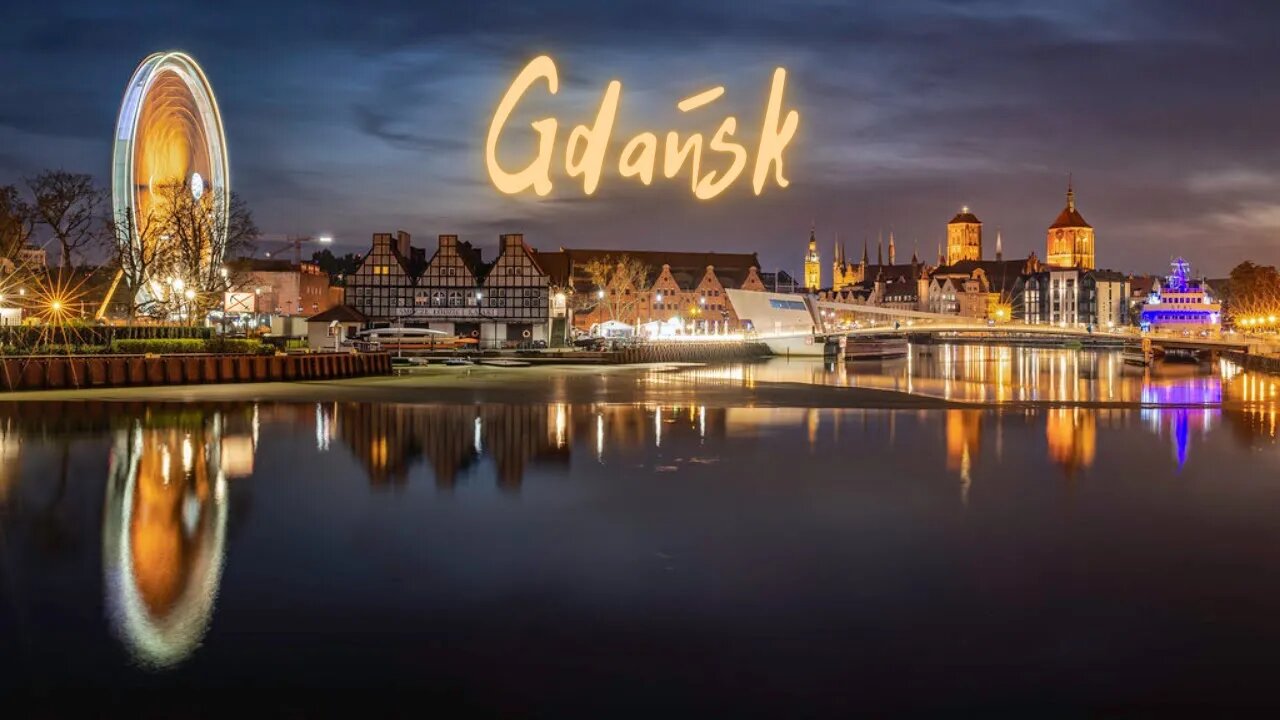Premium Only Content

Ołowianka Island | Gdańsk | Poland
Checking out Ołowianka Island in Gdańsk, Poland. 26/06/23
Ołowianka ( German: Bleihof ) - an island in Gdańsk on the Motława River and the Stępka Canal , located in the Śródmieście district .
History
Ołowianka was in the years 1343–1454 the property of the Teutonic castle.
Life in the medieval port of Gdańsk focused on the left bank of the Motława. There were water city gates, with quays, wooden piers and reloading facilities. The constant development of the port caused the need to enlarge and develop the infrastructure. The land on the opposite bank of the river was used to build new warehouses and transhipment quays.
In the times of the Teutonic Knights, it was an area of great strategic importance, as evidenced by the fact that it was here that the buildings of the order's steward were erected . The oldest name of this place, recorded in documents from 1404, was Szafarnia. The Zamczysko, located on the other side of the Motława River , was connected to this tract first by a bridge, and from 1417 by a ferry . Ołowianka was not an island then. It became such only after digging in 1576 the Canal on Stępka . It owes its current name to the warehouses used to store lead . The largest of them was referred to as the Lead Manor . There was also a scale on which a large crane (designed by Wybe Adam) loaded lead brought by water as far as Olkusz .
In 1454 Casimir IV Jagiellon donated the island to the city, which in the same year incorporated it into its administrative borders. The city began to rent granaries to institutions and individuals. Rent registers mention three granaries in 1499 and four granaries in 1553.
In addition to the Tin Manor , as well as the aforementioned weight and crane, of which no traces remain, there were also granaries . Royal was the best preserved of them . This three - storey building was built in the 17th century . The creator of the granary was the Gdańsk architect Jan Strakowski . Three others - Panna , Miedź and Oliwski - were rebuilt only in 1985.
The eastern part of Ołowianka, once called Ciesielnia, together with Kępa , which ended it , belonged to the harbor. There were great carpentry shops there, as well as a kind of repair yard , which was used by the Teutonic Knights. There was a water barrier nearby , in the form of a long chain or bar blocking the Motława River. It is possible that it still functioned in 1809.
In 1643, there were 7 granaries on Ołowianka Island.
In the late 1860s, construction began on a sewage pumping station in the area of the old Ciesielnia , preserved to this day. Construction was completed early in the next decade. With it came the first chimney and steam engines . The task of the pumping station was to collect sewage from the entire city. It was deliberately placed very low, on the border between urban and industrial areas. The pipes discharged sewage towards the meadows in Stogi (Rieselfeld), where, after treatment in sand-filled settling tanks where vegetation grew, the sewage was discharged into the Martwa Wisła near the Wisłoujście Fortress. In 2018, there was a failure of the pumping station and the discharge of sewage to the Motława River.
In the years 1896–1898, a municipal power plant complex was built on Ołowianka by the Berlin company Siemens & Halske . A railway bridge was built over the Canal on Stępka with a line that transported coal to the power plant. According to the original plans, Ołowianka was to power the lighting of Gdańska and Wrzeszcza streets . Initially, gas lighting was replaced on today's al. Victories . The installed devices supplied a total of about 6,200 light bulbs. In 1907, the length of the then overground network did not exceed 170 km. It was the beginning of Gdańsk's electrification. The power plant underwent extensions increasing its capacity in the years 1905–1907, 1915–1916, in 1942, in 1952 and in 1962.
In the last months of World War II, the plant was damaged. The façade on the Motława River, the industrial chimney and the ceilings of the power plant were demolished. The damage to the plant itself was repaired in August 1945.
In 2011–2012, the area in front of the entrance to the Central Maritime Museum was renovated, where a city square was created.
Transportation
Currently, access to Ołowianka is possible via two bridges over the Canal on Stępce: Kamieniarski Bridge (in the past a drawbridge ) from ul. Szafarnia on the eastern side, and over the bridge from ul. On Stępka, built around 1916 as a railway bridge. The Motława passenger ferry connects the island with the Main Town .
-
 26:17
26:17
The Brett Cooper Show
1 day agoWhy Trans Activists Are Attacking This Gym Owner | Episode 14
31.4K45 -
 LIVE
LIVE
Badlands Media
18 hours agoEye of the Storm Ep. 240
8,804 watching -
 LIVE
LIVE
MyronGainesX
20 hours ago $24.79 earnedJFK Files Exposed With Cory Hughes!
4,940 watching -
 1:19:34
1:19:34
Awaken With JP
12 hours agoJFK Files FINALLY Released - LIES Ep 83
58.3K50 -
 22:41
22:41
Stephen Gardner
4 hours ago🔥I Can't BELIEVE What JUST HAPPENED to Trump!
33.5K69 -
 2:37:35
2:37:35
TimcastIRL
4 hours agoJFK FILES RELEASED, Shocking Documents Released By Trump DROPPED w/Amber Duke | Timcast IRL
195K146 -
 LIVE
LIVE
SpartakusLIVE
8 hours agoReturn to VERDANSK w/ StoneMountain64, IcemanIsaac, and Huskerrs
531 watching -
 LIVE
LIVE
Hevel Gaming
4 hours ago $1.77 earnedHevel Tries To Conquer Rumble
451 watching -
 51:13
51:13
Man in America
8 hours ago🚨 Big Short 2.0: The SECRET $3.8T Debt Bomb That Could WIPE OUT Pensions & US Economy
33.8K3 -

MDGgamin
14 hours ago🔴LIVE - JFK Files TODAY!! 2nd Shooter ? - TARKOV & WoW - #RumbleTakeover
29.8K2